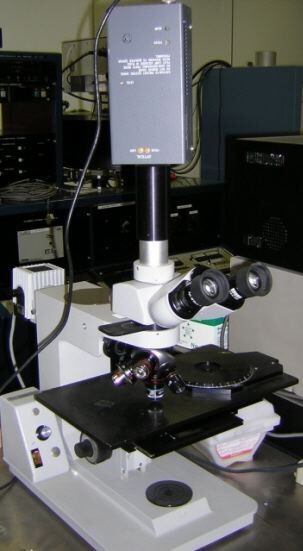

#VICKERS M41 PHOTOPLAN MICROSCOPE SOFTWARE#
The fiber size was determined using software ImageJ software with manually located fibers. The contrast-enhancing coloring was used for contrast visualization. The samples were measured using secondary emission mode, depth regime with 15 kV, working distance (WD) of 10 mm, and 20.000x magnification. Created nanolayer was fitted using sticky label on the pad and its surface was covered by 30 nm gold layer. The images of the nanofibers were made by scanning electron microscope (SEM) Tescan MIRA3. Bruker OPUS software was used for spectra evaluation and the baseline correction was done by “rubber-band.”

Spectral range was calibrated from 4000 to 600 cm −1. The solid samples were measured in attenuation total reflection mode using a diamond crystal. The concentration of polymer (PA6) in a solvent was 12 wt.%, the concentration of NBI in dissolved polymer was 10 wt.%, the electrode distance was 180 mm, the frequency of AC voltage applied was 50 Hz, and the current was 0.004 mA.ĪTR-FTIR spectra were measured using Bruker Vertex 80V spectrometer. The host matrix PA6 was purchased from BASF company. NBI was prepared according to procedure described in the literature by the reaction of 1,2-benzenediamine and 1H,3H-naphthopyran-1,3-dione as shown in the reaction Scheme 1.

The potential of labeled fibers is being, for example, as a component of composite materials (epoxy resins) or as safety agent in the industry. NBI is a very known fluorescent marker for labeling of various materials, and at least as a fluorescent color in reflective material. In this work, we have chosen 7H-benzimidazobenzoisoquinolin-7-one (NBI) for incorporation into PA 6 matrix by the electrospinning process. The main problem is the difficulty of transferring the results from the laboratory to industrial processing. The importance of such materials was capped by the first patent by Toyota on nylon 6 nanocomposite. PA6 has an ever wider application in nanomaterials. This material has been used in connection with electrospun in many applications, for example, as part of the sensor. At the same time, it is possible to apply a thin layer of selected polymers on virtually any surface.Īmong large quantities of nanomaterials, polyamide-based nanocomposites are mostly applied in industry. Their diameters, shapes, and configurations can be controlled using the adjustable parameters in the actual spinning process. Using the electrospinning method, a different type of polymer can be fabricated as nanofibers. Nevertheless, beside the most common polymer nanofibers, this technique has found an application in the preparation of metal, glass, ceramic, and carbon nanofibers. The electrospinning is applicable practically to every soluble or fusible polymer. Moreover, during recent decades, the fluorescent conjugated polymers and their use as active components in organic light-emitting diodes, photoconductors, and sensors give the electrospinning technique farther attractiveness to be leader technology. Such materials could also be used as suitable matrices for the growth of stem cells. Nanomaterials might be used simultaneously in production of synthetic blood vessels, skin, or healing agents. Polymer fiber could be applied, for example, as tissue scaffolds, filtration devices, and fibrous reinforcements in synthetic and biological composite materials. However, a significant progress in this area has been achieved during the past few years due to the wide range of nanofibers applications as novel materials in various devices and the producing of the synthetic polymer nanofibers on an industrial scale. This technique has been known since the early 20th century. The electrospinning technique is, principally, very simple and efficient method for producing polymer nanofibers from solutions or melts. The prepared nanofibers with the fluorescent label were further characterized by fluorescence spectroscopy, both in the solid phase and in the solution. The presence of the fluorescent probe in the fiber layers was confirmed by attenuated total reflection Fourier transform infrared spectroscopy (ATR-FTIR) the surface nanofiber structure was described by high-resolution fluorescence microscope and scanning electron microscope images. The electrospinning of fluorescent probe polyamide 6 doped by 7H-benzimidazobenzoisoquinolin-7-on is presented as a model processing photoluminescent nanofibers.


 0 kommentar(er)
0 kommentar(er)
